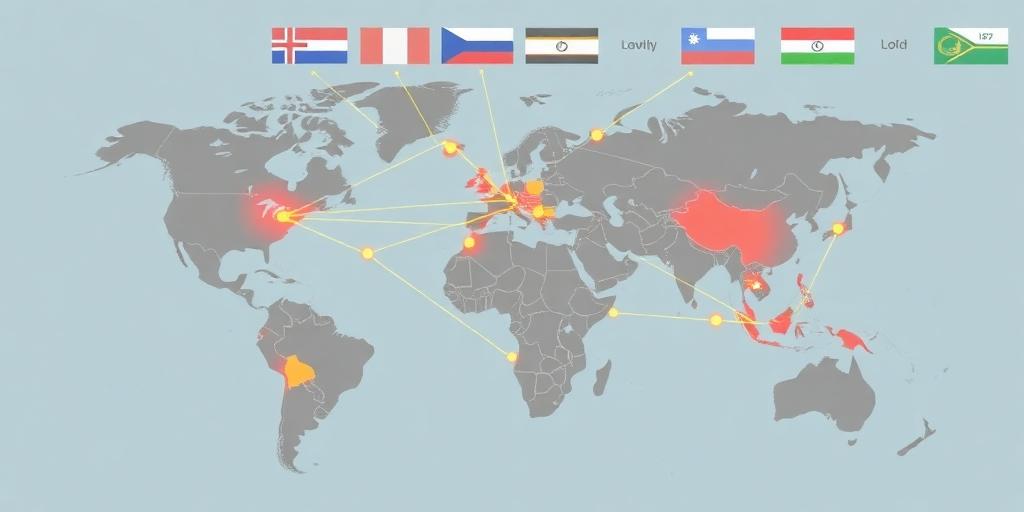Analyzing the Geopolitics of Trade Routes
Trade routes are more than just pathways for goods; they are vital arteries of the global economy and integral to geopolitical strategy. This analysis explores the intricate relationship between trade routes, international relations, and economic power.
The Strategic Importance of Trade Routes
Trade routes have historically determined the rise and fall of empires. Controlling key routes allows nations to exert influence over resource distribution, economic activity, and even military movements. Critical chokepoints like the Strait of Malacca, the Suez Canal, and the Strait of Hormuz remain central to global trade, making them potential flashpoints for geopolitical tension.
- Economic Leverage: Nations controlling vital trade routes can impose tariffs, regulate traffic, and extract economic rents, providing significant financial advantages.
- Political Influence: Dominance over trade routes translates to political leverage, allowing countries to shape international norms and alliances.
- Security Implications: Securing trade routes is essential for national security, ensuring the uninterrupted flow of critical resources and goods.
Modern Trade Routes and Geopolitical Challenges
In the 21st century, the dynamics of trade routes are increasingly complex due to factors such as:
- The Rise of China: China's Belt and Road Initiative (BRI) aims to establish a network of trade and infrastructure projects connecting Asia, Africa, and Europe. This initiative has significant geopolitical implications, potentially reshaping global trade patterns and challenging existing power structures.
- Cybersecurity Threats: Modern trade relies heavily on digital infrastructure, making it vulnerable to cyberattacks. Disruptions to shipping, logistics, and financial transactions can have far-reaching economic and political consequences.
- Climate Change: Rising sea levels, extreme weather events, and resource scarcity pose significant threats to existing trade routes, necessitating the development of resilient alternatives.
Case Studies: Trade Routes in Action
- The South China Sea: This region is a crucial maritime trade route, with trillions of dollars worth of goods passing through it annually. China's territorial claims and military activities in the area have led to tensions with neighboring countries and the United States, highlighting the geopolitical risks associated with trade route control.
- The Arctic Route: As climate change melts Arctic ice, new shipping lanes are opening up, offering potentially shorter routes between Asia and Europe. This development has sparked interest and competition among nations, with Russia, in particular, seeking to assert its dominance in the region.
- The New Silk Road: The BRI aims to revive ancient trade routes, creating a vast network of railways, ports, and pipelines. This initiative has the potential to reshape global trade patterns, but it also raises concerns about debt sustainability, transparency, and geopolitical influence.
The Future of Trade Route Geopolitics
As global trade continues to evolve, the geopolitics of trade routes will become even more complex. Key trends to watch include:
- Technological Disruption: Automation, blockchain technology, and artificial intelligence are transforming trade logistics, potentially reducing reliance on traditional chokepoints.
- Geopolitical Realignment: Shifts in global power dynamics, such as the rise of new economic powers and the decline of established ones, will reshape trade routes and alliances.
- Sustainable Development: Growing awareness of environmental and social issues will drive demand for sustainable trade practices, influencing the development of new, greener trade routes.
Understanding the geopolitics of trade routes is essential for policymakers, businesses, and citizens alike. By recognizing the interplay between trade, power, and security, we can better navigate the challenges and opportunities of an increasingly interconnected world.









